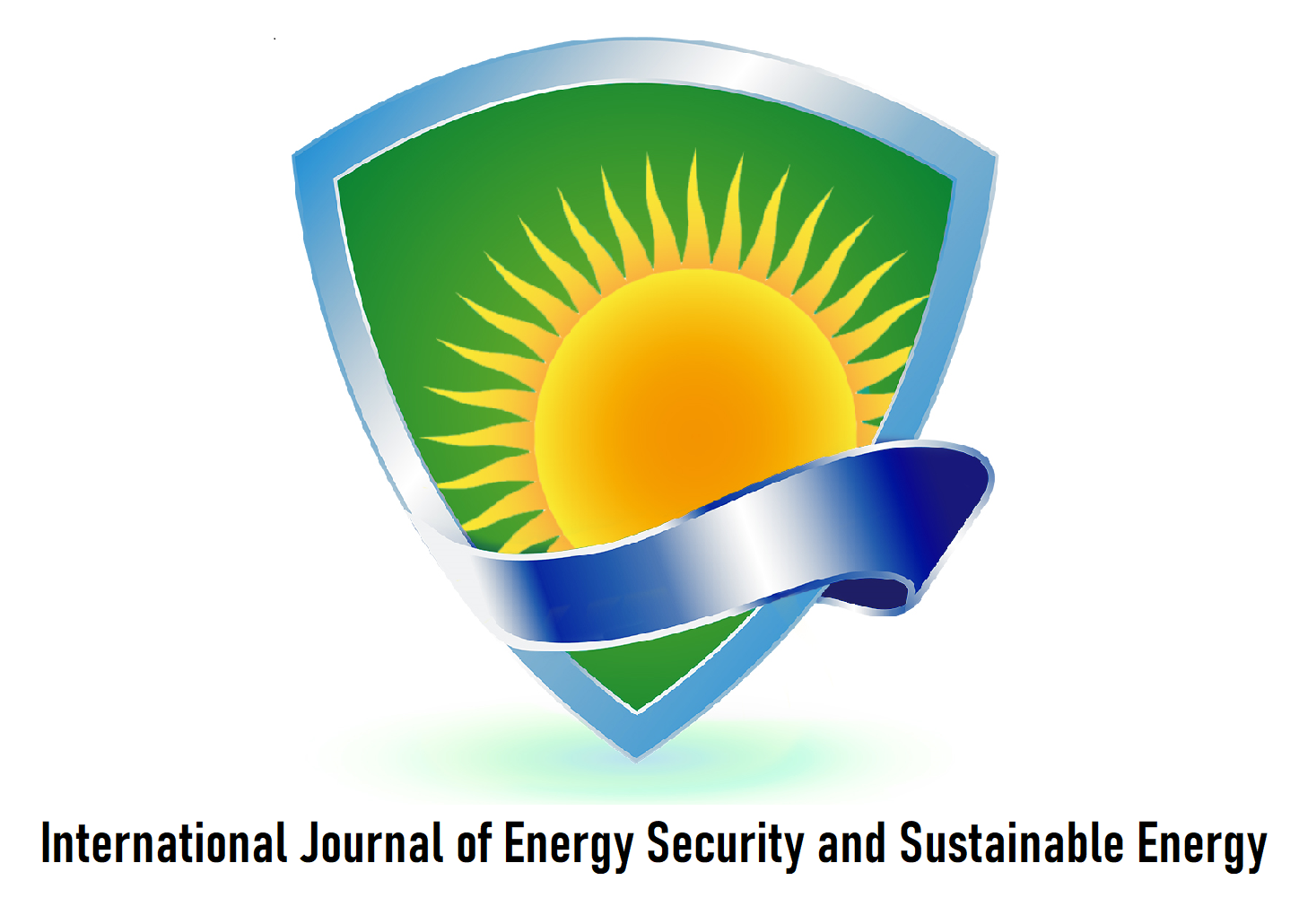DISTRIBUTION NETWORK PERFORMANCE ANALYSIS: BY INTEGRATING PHOTOVOLTAIC, WIND, ELECTRIC VEHICLE GENERATORS AND STORAGE
Afrooz Ghavami0, Mustafa Eydyany1,
0Master of Electrical Engineering-Energy Systems Planning and Management
1Energy Security and Sustainable Energy Institute
URL: https://ijesse.net/article/6
Abstract
Abstract. Energy is the foundation of a developing economy. In general, new energies provide a discontinuous flow of energy. For this reason, it is very difficult to match supply and demand according to production and consumption rates. Renewable energy sources, as useful as they are, require a backup energy storage system to store energy for times when the sun is not shining or the wind is not blowing. Unlike fossil or nuclear fuels, the amount and timing of renewable energy inputs are often beyond human control. Energy storage is one of the most important known human technologies for meeting needs. Pay special attention to the issue of energy storage. In this paper, to investigate the effect of renewable energy sources in evaluating the reliability of electricity distribution networks first, Quasi-Dynamic analysis was performed on the studied system. In this simulation, first, the characteristics of some elements are presented in the form of a table and then the simulation results for a group of other elements are expressed graphically. Transient stability for single-phase fault modes has been investigated for the batteries contained in DIgSILENT and electric vehicles. Also, harmonic analysis was performed on the PCC bus in the presence of three solar, wind, and electric generators. Finally, an EV collector battery model is designed. DIgSILENT Power Factory is used to perform the simulation analysis. Keywords: Vehicle-to-grid, Integration of solar and wind system, DIgSILENT, Storage battery.
چکیده
انرژی زیربنای اقتصاد در حال توسعه است. به طور کلی، انرژیهای جدید یک جریان ناپیوسته انرژی را فراهم میکنند. به همین دلیل تطبیق عرضه و تقاضا با توجه به میزان تولید و مصرف بسیار مشکل است. منابع انرژی تجدیدپذیر، به همان اندازه که مفید هستند، به یک سیستم ذخیره انرژی پشتیبان نیاز دارند تا انرژی را برای مواقعی که خورشید نمیتابد و یا باد نمیوزد، ذخیره کند. برخلاف سوختهای فسیلی یا هستهای، مقدار و زمانبندی انرژیهای تجدیدپذیر غالباً خارج از کنترل انسان است. ذخیره انرژی یکی از مهمترین فناوریهای شناخته شده بشر برای رفع نیازها است و باید به این موضوع توجه ویژهای بشود. در این مقاله به منظور بررسی تاثیر منابع انرژی تجدیدپذیر در ارزیابی قابلیت اطمینان شبکههای توزیع، ابتدا تحلیل شبه دینامیکی بر روی سیستم مورد مطالعه انجام شده است. در این شبیهسازی ابتدا ویژگیهای برخی از عناصر در قالب جدول ارائه شده و سپس نتایج شبیهسازی برای گروهی از عناصر دیگر به صورت گرافیکی بیان شده است پایداری گذرا برای خطای تک فاز در باتریهای موجود در DIgSILENT و وسایل نقلیه الکتریکی بررسی شده است. همچنین آنالیز هارمونیک بر روی باس PCC با حضور سه ژنراتور خورشیدی، بادی و الکتریکی انجام شده است و در نهایت یک مدل باتری کلکتور EV طراحی شده است. برای انجام تحلیل شبیهسازی از DIgSILENT Power Factory استفاده شده است. کلمات کلیدی: وسیله نقلیه به شبکه، ادغام سیستم خورشیدی و بادی، DIgSILENT، باتری ذخیره سازی.
Reference
[1] http://www.satba.gov.ir/fa/satba/information [2] S.K. Mullen, “Plug-In Hybrid Electric Vehicles as a Source of Distributed Frequency Regulation”, Ph.D. Thesis, University of Minnesota, Minneapolis, MN, USA, 2009 [3] S. Han, S. Han, and K. Sezaki, “Development of an optimal vehicle-to-grid aggregator for frequency regulation,” IEEE Transactions on smart grid, vol. 1, no. 1, pp. 65-72, 2010. [4] J. R. Pillai and B. Bak-Jensen, “Integration of vehicle-to-grid in the western Danish power system, ” IEEE Transactions on Sustainable Energy, vol. 2, no. 1, pp. 12-19, 2011. [5] Y. Yao, “Plug-in Hybrid Electric Vehicle in Smart Grid,” Electronic Theses and Dissertations. 723. https://digitalcommons.du.edu/etd/723, 2012. [6] I. D. de Cerio Mendaza, B. Bak-Jensen, and Z. Chen, “Alkaline electrolyzer and V2G system DIgSILENT models for demand response analysis in future distribution networks,” in PowerTech (POWERTECH), 2013 IEEE Grenoble, pp. 1-8, 2013. [7] P. Kongthong and S. Dechanupapritta, “Behavior of unbalance electric vehicle home charging in distribution system,” in Electrical Engineering Congress (IEECON), 2014 International, pp. 1-4, 2014. [8] M. S. Khalid, X. Lin, Y. Zhuo, R. Kumar, and M. K. Rafique, “Impact of energy management of electric vehicles on transient voltage stability of microgrid,” World Electric Vehicle Journal, vol. 7, no. 4, pp. 577-5, 2015. [9] U. Kumar Deb Nath, “Electric vehicles in Smart Grids: Performance considerations,” PhD thesis, 2015. [10] J. García Villalobos, “Optimized charging control method for plug-in electric vehicles in LV distribution networks," PhD thesis, 2016. [11] S. Roy, “Energy management systems for electric vehicles and microgrids,” International Journal of Students' Research in Technology & Management, vol. 6, no. 1, pp. 01-05, 2018. [12] C. Guille and G. Gross, “A conceptual framework for the vehicle-to-grid (V2G) implementation,” Energy policy, vol. 37, no. 11, pp. 4379-4390, 2009. [13] J. R. Pillai, “Electric vehicle based battery storages for large scale wind power integration in Denmark,” Aalborg Univeristy, PhD thesis, 2010. [14] K. Chaudhari, A. Ukil, K. N. Kumar, U. Manandhar, and S. K. Kollimalla, “Hybrid optimization for economic deployment of ESS in PV-integrated EV charging stations,” IEEE Transactions on Industrial Informatics, vol. 14, no. 1, pp. 106-116, 2018. [15] L. Wang, F. Bai, R. Yan, and T. K. Saha, “Real-time coordinated voltage control of PV inverters and energy storage for weak networks with high PV penetration,” IEEE Transactions on Power Systems, vol. 33, no. 3, pp. 3383-3395, 2018. [16] D. J. N. Palma, “Design of future distribution grids,” Faculdade de Ciências e Tecnologia, 2013. [17] U. Akram, M. Khalid, and S. Shafiq, “An Improved Optimal Sizing Methodology for Future Autonomous Residential Smart Power Systems,” IEEE Access, vol. 6, pp. 5986-6000, 2018. [18] G. R. C. Mouli, “Charging electric vehicles from solar energy: Power converter, charging algorithm and system design”, PhD thesis, 2018. [19] M. Eidiani, A. Ghavami. “New network design for simultaneous use of electric vehicles, photovoltaic generators, wind farms and energy storage,” 2022 9th Iranian Conference on Renewable Energy & Distributed Generation (ICREDG), Mashhad, Iran, 23-24 February 2022. New York, USA: IEEE; 2022. [20] R. Xiong, J. Cao, Q. Yu, H. He and F. Sun, “Critical Review on the Battery State of Charge Estimation Methods for Electric Vehicles,” in IEEE Access, vol. 6, pp. 1832-1843, 2018, doi: 10.1109/ACCESS.2017.2780258. [21] W.Y. Chang, “The state of charge estimating methods for battery: A review”, International Scholarly Research Notices, 2013. [22] M. Danko, J. Adamec, M. Taraba, P. Drgona, “Overview of batteries State of Charge estimation methods”, Transportation Research Procedia, Vol. 40, pp. 186-192, 2019. [23] M. Eidiani, H. Zeynal, A. Ghavami and Z. Zakaria, "Comparative Analysis of Mono-Facial and Bifacial Photovoltaic Modules for Practical Grid-Connected Solar Power Plant Using PVsyst," 2022 IEEE International Conference on Power and Energy (PECon), 2022, pp. 499-504, doi: 10.1109/PECon54459.2022.9988872. [24] M. Eidiani, A. Ghavami, “Impact of Electric Vehicles and Photovoltaic and Wind Generators on Distribution Grid”, Majlesi Journal of Energy Management, Vol. 7, No. 4, pp:33-42, Dec. 2018. [25] H. Zeynal, Y. Jiazhen, B. Azzopardi and M. Eidiani, "Flexible economic load dispatch integrating electric vehicles," 2014 IEEE 8th International Power Engineering and Optimization Conference (PEOCO2014), 2014, pp. 520-525, doi: 10.1109/PEOCO.2014.6814484. [26] H. Zeynal, Y. Jiazhen, B. Azzopardi and M. Eidiani, "Impact of Electric Vehicle's integration into the economic VAr dispatch algorithm," 2014 IEEE Innovative Smart Grid Technologies - Asia (ISGT ASIA), 2014, pp. 780-785, doi: 10.1109/ISGT-Asia.2014.6873892.
Download PDF Paper




 Copyright
©
Copyright
©